
Everybody has heard of Ebola, but what do we really know about this scary virus and the disease it can cause?
With the current Ebola news I thought I could give my opinion as a Biomedical Scientist and a very practical and to the point analysis of what this disease is, how it spreads, how likely it is show up in developed countries and what you can do to prevent being infected if it ever does.
I will use several strong images in this brief article, so I have to warn you that some of the images especially may be unsettling, so here is your disclaimer.
According to the World Health Organization (WHO) and Centres for Disease Control and Prevention (CDC) Ebola virus disease (EVD), previously known as Ebola hemorrhagic fever (EHF), is a virus transmitted mainly through human-to-human transmission. Outbreaks have been recorded as early as 1976 in what is now Nzara in South Sudan and Yambuku, Democratic Republic of Congo.
One of the worst outbreaks in history has been recorded in Guinea, Sierra Leone and Liberia in 2014, with 2544 confirmed deaths in Guinea, 3956 in Sierra Leone and 4810 in Liberia, for a total of 11310 deaths and 28616 infected.
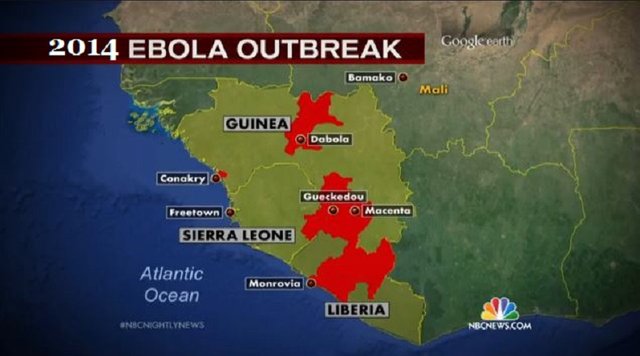
The latest cases of Ebola are being reported right now, in May 2017, but at the moment the disease is mostly segregated to Africa, but cases have even been detected as far as Europe and the Americas.
Scientific specifications
Ebola was first identified in Yambuku, near the Ebola River, a tributary of the Congo River.
There are several types of Ebola virus in the wild, they are all part of the family called Filoviridae: the main Ebola virus was previously known as Ebola Zaire (EBOV), the others are Ebola Sudan (SUDV), Ebola Reston (RESTV), Ebola-Tai or Ebola Ivory-Coast (TAFV), there are also some lesser known subtypes of the Ebola virus that will not be mentioned; we will be talking mostly about Ebola Zaire in this article, the viruses are very similar amongst one another with slight changes in mortality, morbidity and some minor differences.
The Ebola virus is 19.000 nucleotides long, 970 nm long and it about 80 nm in length, virus, the EV only encodes seven structural proteins: nucleoprotein (NP), polymerase cofactor (VP35) (VP40), GP, transcription activator (VP30), VP24 and RNA-dependent RNA polymerase (L), Ebola is considered a very large virus.
EVD fatality rate is around 50%, sometimes reaching 90%, with a morbidity (the rate of disease in a population) way higher than most diseases making Ebola one of the mostly easily communicable diseases known to mankind.
Proven methods of transmission
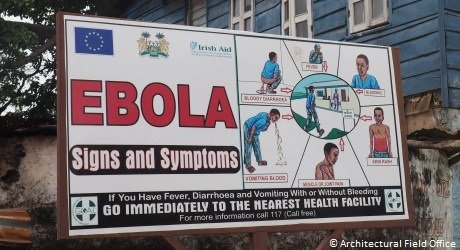
Blood contact, be it through lesions, secretions, organs, etc.
Sexual contact, EV has been detected in semen, so sexual transmission is possible mostly from male to male and male to female, female to male and female to female is theoretically possible but less probable. Ebola can stay up to 61 days in semen, even after the patient is cured.
Burial ceremonies, in some places of Africa the bodies of diseased loved ones are washes before being buried, the disease can spread through contact with dead bodies.
Patient care, several health-care workers and care-takers have been infected for treating patients without proper biosafety level equipment.
Bush meats, Ebola has several known vectors (an animal carrier of the disease) such as bats, cane rats, duiker (antelope) and monkeys, and the consumption of those types of animals as food can transmit the disease, much like a human body in the burial ceremonies.
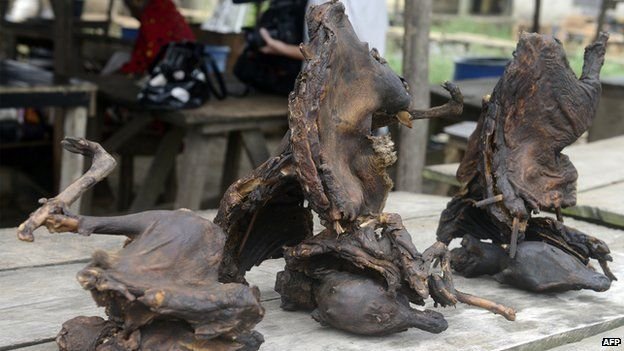
Unproven methods
It is unknown if Ebola can be transmitted by sneezing, the virus cannot be transmitted by air alone, but droplets of fluid can be infectious and because of that when dealing with a known case of Ebola upper respiratory biohazard gear and eye protection is required.
Ebola can survive for several hours on doorknobs, flat non-heated surfaces, clothes, etc.; and it is known that it can survive for several days in bodily fluids as blood when it is kept at room temperature. The virus is also known for being transmissible by breast feeding.
There is also no evidence that mosquitoes can transmit the Ebola viruses, since they are hematophages they actually ‘digest’ the blood that is drained.
Symptoms
Once infected the virus will remain (probably) undetected for about two or three days, after that period the infected person will begin to show the following symptoms, fever, sore throat, muscular pain and headaches, not unlike a flu virus, the fever usually goes over 38.3°C (101°F), the fever temperature can go up a lot after that.

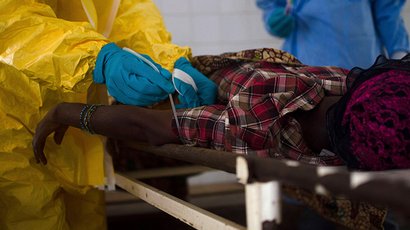
After a few hours or days of that the following symptoms can present themselves: vomiting, diarrhea, rashes, blood in stool, chills, fatigue, malaise, and shivering, red spots on skin and blisters.
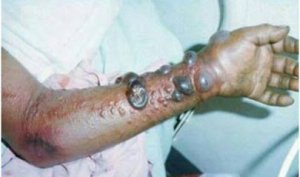
Some of the most extreme signs can show up after that, coughing up blood, vomiting blood, mental confusion, and extreme pain in the abdomen, joints, muscles or chest.

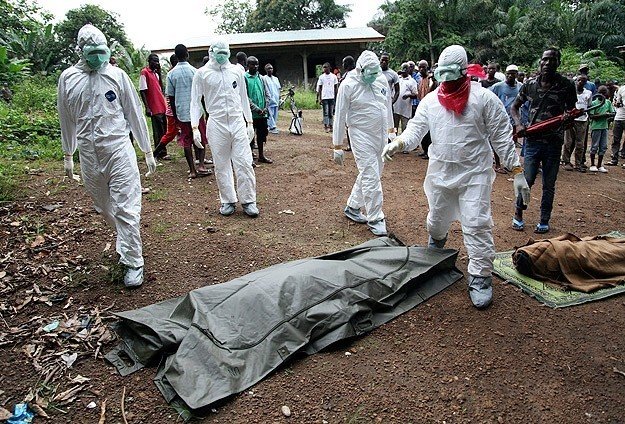
After some of the extremes signs show up it is likely the patient will die in 2 to 21 days.
Can the Ebola virus spread to my country?
It probably already has, but there is a big difference between one case and one disease actually stay there, that is becoming endemic to that particular region.
The Ebola virus thrives in places where the vectors are plentiful, that means hot and humid climates, the virus would to go through several mutations to be resistant to snow-falling levels of cold and the absence of bush meat consumption, that means that cold countries are much less likely to become Ebola havens.
That doesn’t mean that person to person transmission can be discarded, one should always be aware of people that have traveled to places where the virus is endemic, or even worse, epidemic.
I am infected, what now?
Not all is lost for the ones that comes in contact with the disease, since it can be cured with proper medical support, the treatment consists mostly of IV fluids to keep the patient from dehydrating, blood transfusions, oxygen therapy and pain medications. It is a very long process, it is also very painful, but it is treatable.
A vaccine is also being developed, in December of 2016 the VSV-EBOV vaccine has shown great promise with 70 to 100% effectiveness against the Ebola virus, it is the first proven vaccine against the disease.
If you are starting to showing Ebola-like symptoms, quarantine yourself immediately, put on a face mask or cloth, avoid touching anything that you don’t positively have to and call a medical doctor that you know, asking him or her to contact CDC or the equivalent on your country, if you don’t know any medical doctors ask any people in healthcare that you know, if you don’t know any, call it in yourself, tell your family, especially older people and children to stay away and to leave the immediate area.
Drink plenty of fluids if you are not already vomiting and dispose of any fluids that come out of your body in the same location if possible, keep at least one phone at hand and stay calm, help is coming.
Remember that one of the attributes of this disease is that you cannot be close to people that are infected, remember that your loved ones have a better chance of staying healthy if you stay far from them.
Can Ebola be used as a bioweapon?
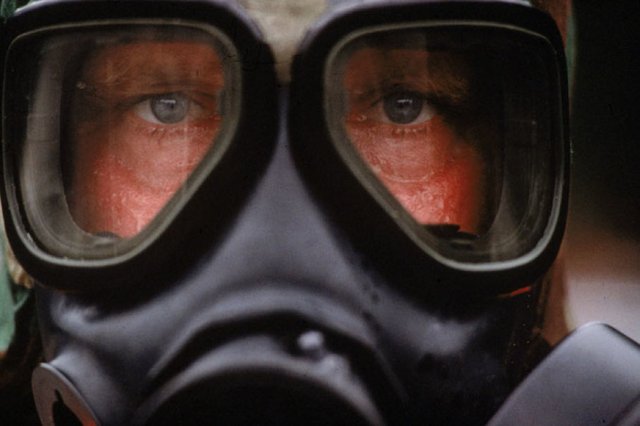 Unfortunately, yes. There have been cases already that point to an artificial introduction of the virus in certain areas, but since this cannot be proved I won’t discuss it in this article, if you have more questions about this particular subject ask in the comments.
Unfortunately, yes. There have been cases already that point to an artificial introduction of the virus in certain areas, but since this cannot be proved I won’t discuss it in this article, if you have more questions about this particular subject ask in the comments.
This concludes my brief explanation on the Ebola virus disease, I hope this was an interesting read and I thank you for your time.
I would ask of the readers to check out my other articles and tell me which diseases, chemical weapons and toxins you are interested in, there are several intriguing organisms and chemicals in our planet, I hope we can study them together.
Acknowledgements – I used several stock google images, these images can be of other similar diseases to Ebola, like Lassa or Marburg, the symptoms can be quite similar, and therefore the images can be used to demonstrate a point.
Information from several scientific articles was gathered and used to write this article that can all be found on the CDC website, WHO website, alongside a lot of material from google scholar, ncbi, bmj and scientific magazines.
My personal experience with this particular subject was also used, I never came in contact personally with the disease, but I tended to a patient that had symptoms similar to Ebola, which sparked my interest in the virus and history behind it.
Read more on: http://truthbesold.com/ebola-virus-disease-a-scientists-point-of-view-and-analysis/
p.s.: Check some of my other articles!
The first time I was invited to make Cocaine - https://steemit.com/drugs/@niann/the-first-time-i-was-invited-to-make-cocaine
Endemic, Epidemic, Pandemic - What's the difference? - https://steemit.com/health/@niann/endemic-epidemic-pandemic-what-s-the-difference
A very scary and concerning virus!
Downvoting a post can decrease pending rewards and make it less visible. Common reasons:
Submit
Very much so, I like it keep informed, even if the subject is a little grim. Glad you liked the article.
Downvoting a post can decrease pending rewards and make it less visible. Common reasons:
Submit
Hi, I've seen some of your publications I'm going to follow, follow me and let's collaborate together =)
Downvoting a post can decrease pending rewards and make it less visible. Common reasons:
Submit